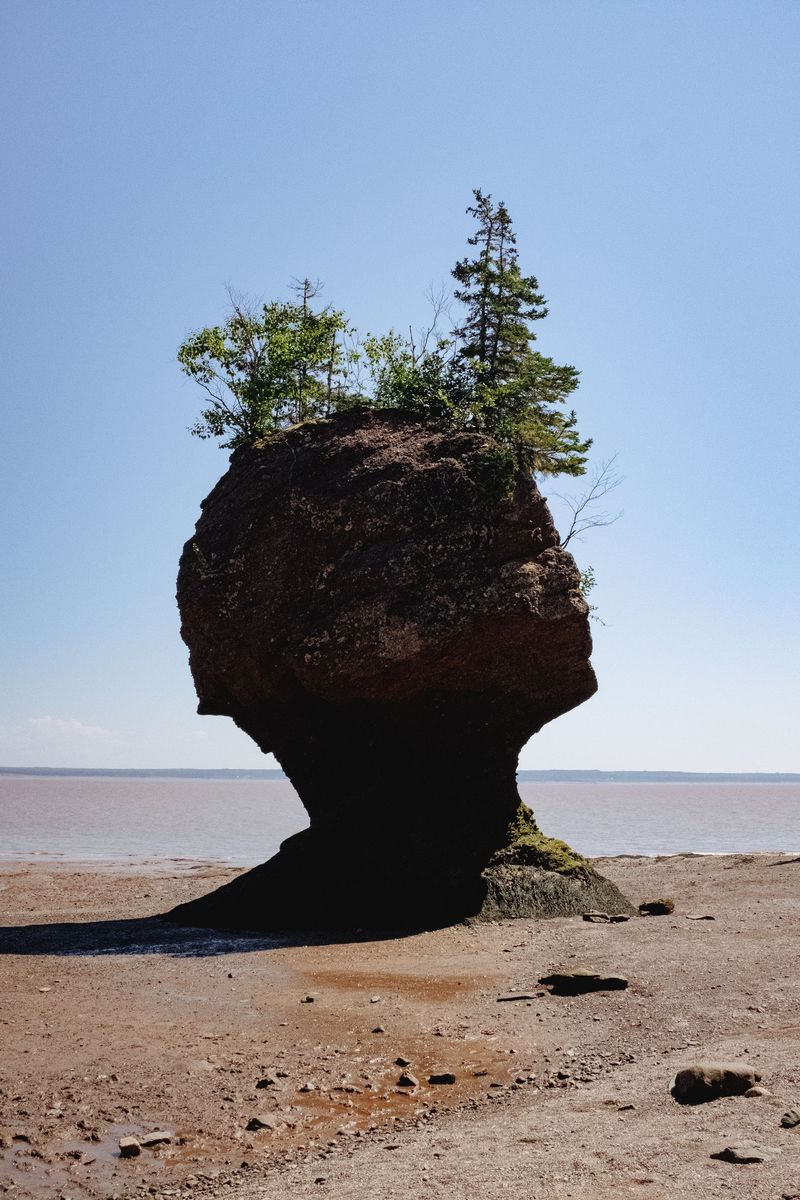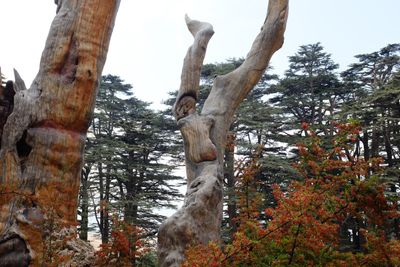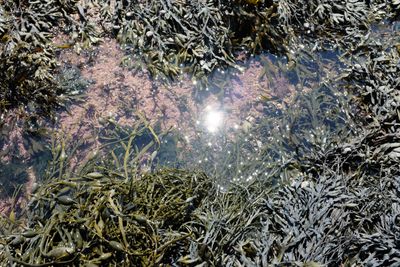1. And this was the light
– A note from Patrick
The ground would close around him, sealing out light, then sound. His consumption would begin with erasure. It must have appeared like seeing him first through a fogged shower door, then tissue paper, those soft eyes now blankly open to the earth. Fungal growth tips, called hyphae (the Greek word for “web”), would emerge, following the lightning pattern inward toward his heart. The fungi would then expand outward and entangle with plant roots in an exchange of nutrients as old as life on the dry parts of the planet. The poisons inside his body would be neutralized by the fungi and Luke Perry would travel through mycelium to roots in a sprawling, if poorly understood, exchange that underwrites life. The edges of him would become blurry, then meaningless, as mushrooms reorganized his body toward life again. Then he’d push back into the sunlight of his farm, where he was happiest, maybe as a leaf or an insect, soil or bird, snake or rabbit. In practically no time, he would be gone and yet everywhere. Joined. Connected. Safe.
Out here on Newfoundland’s southern shore, where I seem to find myself for longer than I plan to around this time every year, I’ve been thinking a lot about burial sites. It might be all the glorious peat bog around here — the sort that would have you dug up a millennia or several hence, leaving future scholars to wonder about the mysterious life of Avalon Man. It seems like a nice way to go. An infinite delaying of decay, just laying down there, waiting. Not sure if it was reading about how Luke Perry was buried in a mushroom suit that got me thinking about that or not. Anyhow, it’s a beautiful idea, as Casey Lyons imagines it in Orion. Only problem is, as Lyons points out and as far as any of the tests show, the mushroom suits don’t work. They’re a fantasy of a certain kind of deep and infinite connection, a wish for something grander than the fate that met actual test subjects: “There was just the normal, natural, unimpeded process down there in the loamy Texas dirt, ticking in the clockwork way that evolved alongside life.”
We hate it when we lose our sense of wonder. We can’t abide the empty space without explanation. Catherine Oliver, reflecting in Geoforum on what it is to return to the field after two years inside, considers the meaning of fieldwork that doesn’t find anything. Stuck in the sort of depression fog an academic paper won’t often cite, listening to her neighbour’s chickens cluck through the window as a reminder of the research she was failing to complete, she ponders what it is not find things in a pandemic-upended world where people don’t move through space in the same way they used to.
As we “return” to research, we are facing a hole in our narratives, and in the world: more nothing and nothing more than there was before. This nothingness is going to dictate scholarship for years to come, and recognising its significance is perhaps one of the greatest challenges, and questions, facing geographers of the near future.
Thinking of an old master of looking into the silence, as I often do while watching the shore life out here in front of the house – the seals, the plovers, the crabs, the gulls, the jellyfish – jostle with the tides and each other, I appreciated this consideration by Annelise Chen of Rachel Carson’s masterful and these days somewhat forgotten (but still goddam glorious) Sea Trilogy in The Atlantic, where much of those books first appeared eighty years back. Carson, Chen writes, might not have known the crises that were coming after her time, but her arguments for close observation, for connection, and for wonder, as tools of survival stand just as firm.
In our day-to-day lives, pure enjoyment of nature can seem somehow suspect or unproductive, and the justification of such time spent is often couched in utilitarian or economic terms. Walks are for clearing heads; hikes are good exercise. Carson anticipated this line of thinking. In The Sense of Wonder, she asks rhetorically, “What is the value of preserving and strengthening this sense of awe and wonder … ? Is [it] just a pleasant way to pass the golden hours of childhood, or is there something deeper?” Though we tend to think of the American mid-century as a time of prosperity and advancement—perhaps they had time to wonder, but we don’t—it was, in fact, equally plagued with existential emergencies: the Cold War, McCarthyism, segregation and intractable racism. Stopping to wonder seemed frivolous back then too. Carson’s rebuttal, rousing and powerful, argues that wonder provides no less than joy, hope, and inner strength in the face of despair and annihilation
Since we last wrote, another advocate for such wonder, James Lovelock, has left us. We found a new fossil galaxy, too.And we proved the math of black holes. But the James Webb telescope has shown us in ways we didn’t comprehend before how the universe bends and distorts through spacetime. I’m old enough to remember when they first gave the Hubble a new set of glasses. It was right on the tail end of my space obsession, but I can still feel that thrill of standing by a runway on Cape Canaveral as a 10 year old, watching the Discovery, the shuttle that had carried it up, landing piggy backed on a 747. That pure wonder at the impossibility of where it was coming back from. I felt it again with those first Hubble images, and again, as you did, I’ll bet, when the initial JWT deep field images came through. Barry Petchesky put it best:
And so, in due time, the light arrived. By now it was many photon streams, some thousands upon thousands points of light from each of thousands of galaxies, each of those separated from the others by millions or billions of years and light-years. But their light was together. And that light converged on a certain point. The location of this point was one million miles from an unremarkable blue planet orbiting an unremarkable main-sequence star. The size of this particular patch was roughly a grain of sand of that nearby planet as seen from about a yard away. And the light struck something there, and went no farther. And this was the light:


you can get yourself a VPN, sign up for all the streaming services in the world, but the fact remains, the only way to see some of the most vital and groundbreaking work being done in animation right now is to go to a bowling alley and knock all the pins down in one go
— Chloe Alison Escott (@vesselskirt) August 20, 2021
2. A magazine we used to make, and other works
Some of you first arrived at this email a ways back from a magazine that a few of us used to make – The Alpine Review. While we loved the fact that Alpine was a very particular kind of print magazine, it always sorta sucked that much of the work we produced just didn’t really seem to exist all these years down the line, in that way things don’t when you can’t find them online. And sure, Alpine was deliberately set up in opposition to that general state of things, but still, it’s a really nice feeling to have the whole damn archive up and browsable, at last. It's so good to share it with you.
For starters, a couple gems that still deserve attention:
- Ruby J Murray on the history of public toilets, from the first halting stations to the JC Decaux Sanisette, in response to us asking her to write about startup culture in San Francisco.
- Our own Chris Frey, on Moscow’s growing facade of new internationalist hipster public spaces in 2016.
Much more recently (as in this week) for The Story, Patrick wrote on the anthropological basis for Kurt Vonnegut’s story graphs.
And Eli’s got a printer you can borrow over at The New Yorker.
the new trend forecast is that "trends happen"
— Rob Horning (@robhorning) February 22, 2022
3. More teen characters in TV shows
At The Prepared, Anna and Kelly Pendergrast on the ruptures beneath the smooth and beautiful surface of everybody’s favourite furniture ply, Baltic birch:
Commodity or “primary” exports like timber, meat, or linen, are inexorably tied up with national identity, nationalism, and geopolitical events. Aalto recognized this when he mobilized Finland’s national pride in its birch forests with his bentwood furniture, tying together a prized primary material with sophisticated industrial processes. Today, as Russia’s militarism and unjustified invasion casts a negative light (and strict sanctions) on its exports, the woodworkers and designers that had come to rely on Baltic birch are left scrambling for an alternative. No commodities are “natural”, and none exist outside of contemporary circuits of production and supply. Entangled as they are with resource extraction and dependent on some degree of supply chain opacity, commodity building materials develop murky and often troubling relationships with politics, economics, culture, and sustainability. In 2022, Baltic birch is particularly murky: a fraught but aesthetically compelling composite of nature, culture, and politics.
Max Read with the deep dive on how all those wrong-number texts you keep getting actually work as a scam.
At The Walrus, friend of the newsletter Josh Greenblatt looks at the increasing encroachment of personal lives into LinkedIn, now in a state where “a site that is expressly committed to fostering conversations about work, has evolved into yet another platform that rewards users for constructing and performing an online persona.”
And finally, at The New Inquiry, turning dreams into memes on the thomastheplankengine subreddit.
When the last person joins, and finally England is one long orderly queue, stretching across the land, then at last we can cease from mental fight for we shall have built Jerusalem here
— Hari Kunzru (@harikunzru) September 15, 2022
4. What happens on the roof stays on the roof
For The Baffler, Hettie O’Brien reviews Alexandra Lange’s history of the shopping mall, that grand suburban beast that still exists in a constant loop of being proclaimed dead in new and creative ways. Lange, and O’Brien, use the oft-told tale of Victor Gruen’s dream, led astray by the broader forces of change in our cities over the past half century, to think deeply about how real use of public space is improvised and adapted. In that adaptation, undervalued, understudied, and less planned ways of living in urban space really emerge. Related in O’Brien’s telling is the “Business Improvement District”, a phenomenon which emerged in our dear Toronto back in the 70s, for better and for worse.
Malls are what societies build when hopes for truly public spaces, with all the negotiations and minor conflicts they demand, have receded. Towards the end of his life, even Victor Gruen could see that his great invention had not turned out well. When asked in an interview about shopping malls, Gruen reportedly said that he “refused to pay alimony for those bastard developments.” Yet it would be a tragic waste to cede “dead” malls to the post-apocalyptic fantasies of Instagram and TikTok or to demolish them entirely. Lange is more interested in adaptive reuse: the potential for such developments to find new and more democratic lives. “Malls are reservoirs of open space in increasingly built-up environments,” she writes. “Where else could a city, or a suburb, ‘find’ over one hundred thousand square feet of available space for a new public library? Where else could they ‘find’ a new park location close to existing housing, displacing no one, and with minimal demolition required?”
Pair that with Places Journal’s republication earlier this year of George Sand’s 1867 “Rêverie à Paris”, which Sand addressed to an excellent friend in her opening sentences as “an essay on the squares and gardens of Paris, in other words a study of nature acclimatized to our world of rubble and dust.” Gideon Fink Shapiro’s thoughtful introductory essay situates Sand’s thinking:
What makes the text worth re-reading is Sand’s core argument about social inclusiveness and aesthetic delight. Her essay still prods us to question what “we” — as publics perennially oppressed by racism and inequality — want and need in the design of urban landscapes. Can well-conceived public spaces encourage social harmony? Can they give us the amplitude, the luxury, to dream? Can they distract us from personal torments and help us to reconnect with our social surroundings and our unconscious minds? Instead of contributing to gentrification and displacement, can city green spaces foster moments of joy, rest, and expansiveness for people who justifiably fear that any investment in public beauty will drive them from their communities?
While we wonder what air-conditioned reverie Sand might have found in the oh-so-cyberpunk linear city of Neom, there’s apparently room for one more jig on the peat bog grave of Toronto’s failed Sidewalk Labs smart city development in MIT Tech Review. It’s a flawed, odd piece, which seems to extrapolate the project’s fundamental political and civic failures—lobbying failures, really—as some sort of more meaningful end to the smart city dream that a certain breed of urban planner can’t help but keep dreaming. The project that will — in some form — be built in Sidewalk’s place has a slick list of design collaborators, some nice looking buildings, urban farms stacked on top of nice mass timber frames, and plenty of renderings of tree-lined public spaces that are conspicuously season-ambiguous, but it’s not clear how said renderings do anything special to rebut “the smart city concept itself” as this piece claims, or do much different in terms of weather-driven adaptability than what was on the cards. In a city that has a long history of lovely looking renders being bait-and-switched into infinitely less desirable public space, we don’t see anything in this that responds to the real, inevitable, and homogenous “smart” city that Anna Wiener sees coming in this New Yorker piece on self-driving cars, anodyne art, and an urban environment increasingly “governed by the principles of marketing, the aesthetics of high-tech homogeneity, and the interests of venture capital, and imbued with the sterile, cheerful infantilization of startup branding.”
“Living in any city means jostling with other people’s fantasies for the future,” as Wiener writes.
Lamentably, neither Quayside 2 or Neom will have maintained much room for pigeon fanciers. We enjoyed the deep passion, history, and layers of darkness, in Lea Saad and David Wood’s long read on the lives of pigeon fanciers on the rooftops of Beirut — ”a mix of thugs and theorists” — for New Lines, a piece that made us miss the old pigeon fanciers of the Ontario Giant Runt Club in our neighbourhood, long since gone not so much due to gentrification so much as entropy):
The pigeon game takes on special importance in lower-income areas like the Burj al-Barajneh refugee camp, where Palestinian refugees have endured decades long, intergenerational poverty. “[The pigeon game] concretizes power games of the neighborhood,” claims anthropologist Emma Aubin-Boltanski, who studies social dynamics among pigeon fanciers in Hay Gharbe, an informal settlement in southern Beirut that hosts thousands of Syrian refugees. While many rivalries remain on friendly terms — every night, at pigeon cafes across Beirut, fanciers swap tales of conquest and theft — some contests devolve into intimidation and violence. “It becomes a way to assert power,” Aubin-Boltanski explained in an interview. “What happens on the roof stays on the roof.”
if gasoline is getting too expensive, it’s okay to pump water into your tank. you probably won’t be able to go above 90 mph, but fine, it’s wet, it’ll do the job. what i can’t accept is milk. if i hear one more person tell me they’re filling their tank with milk i’m gonna puke
— Jon Bois (@jon_bois) July 6, 2022
5. His software sang the words of God
Oh god, this article — “His software sang the words of God. Then it went silent.” — on an unmaintained piece of software for training the Torah? We know it did the rounds when it came out, but it’s just so very unexpectedly beautiful. Read it if you missed it!
And then delight in Joanne McNeil here on the loving maintenance of Chris Marker’s 90s CD-ROM project, Immemory (which Chris F owns but cannot get to work on any of the drives he now owns):
Marker thought of himself as a “Sunday programmer,” and Yang remembers, with a laugh, that his experiments with computers “didn’t always work so well.” When he’d send her emails, she recalls, “It was always something that he had hacked from somewhere. It was something incredibly buggy. Or it would freeze my computer. He got it off of some place on the internet or some hacker.”
Gaia wasn’t the only concern of the now-departed James Lovelock. One of his final works, Novacene, written near the time he turned 100, was surprisingly optimistic about the future of humanity in a world of artificial intelligence. He seemed to hope for what Richard Brautigan once wrote of ironically, us “all watched over by machines of loving grace.” There’s a whole lot more to say about that in James Bridle’s new one, Ways of Being, which we’re going to come back to in a future issue.
The last several months have delivered quite the takestorm about the rapidly accelerating quality of generative AI text-prompt-to-image tools in the last few months, as Dall-E Mini hit the meme circuits, Google refused to release their own tool, and Midjourney quietly snuck through in the background as a much more open and interesting Discord community-driven experiment in the form, that’s now evolving at a ridiculous pace. As usual, we turn to Holly Herndon and Mat Dryhurst for that fine balance of “taking it seriously as a tool full of possibility” and “not succumbing to blind idiotic hype about its real implications”. In this essay, prescient though only four months old, they imagine a collective “tool for jamming, rapid iteration and potentially co-authored social experiences” that has already begun to emerge since they wrote it. That’s the use we’ve been finding — not as some sort of profound new mode of art, just another cool tool, even if it’s one built on the creative output of others.
“The ever evolving pursuit of art is greatly benefitted from reducing any friction in sharing what is on your mind. The observer is the ultimate discriminator, and as with any technological development that makes achieving a particular outcome more frictionless, creating great art that speaks to people in the time that it is made remains an elusive and magical odyssey.”
(Dean Kissick’s always great on this stuff too.)
Meanwhile, this lengthy piece in Foreign Affairs considers how applications of machine learning, and lust for same, might fuel cycles of delusion in democracies and autocracies alike. And at Daedalus, Stuart Russell looks into the future and imagines what a world where actual general-purpose AI might have come to pass could look like, for better and for worse: “Success is to be measured not by the accuracy of the AI system’s predictions and decisions, but by the real-world consequences of deploying the system. In other words, we need a theory of sociotechnical embedding for AI systems, somewhat analogous to the role that city planning plays for the artifacts produced by civil engineering and architecture.”
And in Noēma, Benjamin Bratton and Blaise Agüera y Arcas dig deep and ambitiously into the language and philosophy of machine “sentience” and the underlying questions of how an AI models a mind. The ways we think and talk shape how we conceive of what’s ahead of us. This we know from a thousand philosophers before. It’s no different here. Their argument is for a “speculative philosophy of machine intelligence” to orient us towards those futures thoughtfully.
One clear and present danger, both for AI and the philosophy of AI, is to reify the present, defend positions accordingly, and thus construct a trap — what we call premature ontologization — to conclude that the initial, present or most apparent use of a technology represents its ultimate horizon of purposes and effects.
Too often, passionate and important critiques of present AI are defended not just on empirical grounds, but as ontological convictions. The critique shifts from AI does this, to AI is this. Lest their intended constituencies lose focus, some may find themselves dismissing or disallowing other realities that also constitute “AI now:” drug modeling, astronomic imagining, experimental art and writing, vibrant philosophical debates, voice synthesis, language translation, robotics, genomic modeling, etc.
Anyway, here’s when we asked Midjourney for a bear washing the dishes in a cabin in the woods a couple of months back:

6. “Noisy”: “chaotic,” “busy,” “restless,” “irritating,” “noise-like,”“constant humming,” “fucking noisy!”
We’ve been thinking a lot about ocean sounds, and not just because Patrick bought a cool hydrophone and keeps dangling it in lakes. One particularly compelling chapter of David George Haskell’s recent book Sounds Wild and Broken documents the effects of the relentless and inescapable pounding of seismic pulses and other audio jackboots of industry on whales and other marine life. Not long after we read it, this Wired piece on ocean soundscapes delved further into the issue, which had us chasing the literature (we were never going to not link a paper titled “The soundscape of the Anthropocene ocean”, right? But this study’s also good.)
It’s a critical, and critically understudied, aspect of how rising temperatures—and increasing noisy activity like shipping—might be affecting marine ecology. “The soundscape of nature really only came to the forefront of people's thinking in the last 10 or 15 years,” says Ben Halpern, a marine ecologist at UC Santa Barbara, who studies pressures on ocean ecosystems. Scientists are now, for instance, getting a better idea of forest biodiversity by listening for life—insects, birds, amphibians—that might be hidden from the human eye. “It's only more recently that people are starting to be aware of the role of soundscapes in oceans, telling us a story about what's happening underwater as human impacts expand,” adds Halpern.
Similar new rumbles coming from under the earth — spend some time with the works in this great piece on soil bioacoustics.
Above land, at Noēma, Lauren Kelly looks at efforts in Rotterdam to reconsider the role of noise in the modern city, in a way that would have made the late R. Murray Schafer proud.
Asked to characterize Hofplein in a recent survey, residents by and large used variations of “noisy”: “chaotic,”“busy,” “restless,” “irritating,” “noise-like,” “constant humming,” “fucking noisy!”. Huijsman hopes to change that. He maintains that sound should be reconsidered as a fundamental component of the lived environment, rather than a byproduct to be ignored or minimized, and that urban life now and in the future requires a healthy soundscape, one in which the focus is not on the decibels but the quality of the sounds. In Rotterdam, at least, city planners are listening: Soundtrackcity is curating seven public sites, Hofplein being one, into places of meaningful sensory experiences.
For Late Light, the not-yet-fully-existing journal of the Brooklyn Institute of Social Research, Ajay Singh Chaudhary takes a somewhat different view of the idea of “The Long Now” as he considers the ways we think about time when we think about climate change.
“As you can probably already hear, there are different ways of conceiving of time embedded in these different ways of understanding the politics of climate change. Different presents, different futures. Much “green” discourse talks about the relationship of present and future in which the current “generation” or current “interests” are robbing“our children” or “grandchildren”; that the fundamental issue is some broad register of the “desires” of this moment outweighing the needs of the future. This too is in error. The challenge of climate adaptation and mitigation is about the here-and-now; it is not a question about doing something today for hopeful results tomorrow. It is rather a question of the direct intervention and fundamental transformation of the systems of today as the precondition for even thinking about tomorrow.
For your pleasure while considering the above, please enjoy the latest additions to the Wageningen University collection of more than 1,000 European tree root systems.
In Phenomenal World, Lily Hu interviews Olúfẹ́mi Táíwò on reparations and climate justice, also slipping into questions of how to not forget what’s past, as we face the urgent struggle to build any kind of “in front” that’s equitable and just:
Focus on the past can shift the goal posts in ways that are politically destructive. The most obvious version is when a focus on the past becomes a staging point for symbolism—we are going to take up our share of this global load because our ancestors also contributed to an injustice, and by doing that we thereby achieve holiness, or even absolution. This frame is entirely silent on what actually happens as a result of your taking up this white man’s burden. It is not just the fact that we are acting, but we need to make a difference that helps the people who are made vulnerable by past misdeeds. We need money for green development, and from this premise technical questions begin to arise. Does that assistance come in the form of loans? What is the governance structure of the projects that are run with the money? Who is in a position to even propose projects in the first place?
Kill the moodboard in ur head
— chaka (@1hundredtears) September 13, 2022




